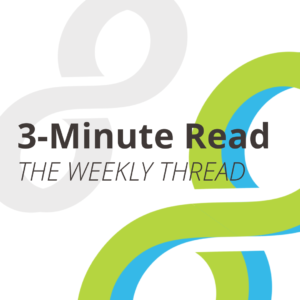EPSCoR Explained: Empowering Innovation Across America
May 28, 2024 —Since 1979, the National Science Foundation’s Established Program to Stimulate Competitive Research (EPSCoR) has invested more than $2.55 billion in science and engineering research. The program helps bolster competitiveness and capacity in regions that receive a disproportionately small share of NSF funding, currently 28 U.S. states and territories. Despite the program’s robust history, many are still unfamiliar with its function, the participating agencies, and the benefits it can bring to partner organizations.
—Since 1979, the National Science Foundation’s Established Program to Stimulate Competitive Research (EPSCoR) has invested more than $2.55 billion in science and engineering research. The program helps bolster competitiveness and capacity in regions that receive a disproportionately small share of NSF funding, currently 28 U.S. states and territories. Despite the program’s robust history, many are still unfamiliar with its function, the participating agencies, and the benefits it can bring to partner organizations.
EPSCoR history
NSF established EPSCoR to address concerns over the uneven distribution of federal research and development grants across the United States. By providing funding to states and territories historically underrepresented in federal funding, EPSCoR has helped cultivate STEM careers, build research capacity and competitiveness, and accelerate science and technology for U.S. global competitiveness. In FY 1992, the Interagency Coordinating Committee (EICC) was established among the federal agencies with EPSCoR or EPSCoR-like programs. It functions as a working group for interagency coordination and communication and helps to maximize and streamline federal support in EPSCoR jurisdictions. EICC members include the U.S. Department of Energy, NASA, the National Institutes of Health, NSF, the U.S. Department of Agriculture, and the U.S. Department of Defense.
Along with direct awards to improve research infrastructure, EPSCoR often co-funds intradisciplinary and multidisciplinary research proposals in other NSF programs if the applicant is in an EPSCoR jurisdiction. This allows otherwise unfunded applicants to receive support from EPSCoR and the co-funding directorate, which helps facilitate EPSCoR scientists’ participation in NSF-wide programs and initiatives. EPSCoR funds workshops and other community-based activities to explore emerging areas of science and engineering and share best practices in areas of importance.
Programs similar to EPSCoR exist around the world. Strength in Places Fund is a UKRI program that aims to build research and innovation capacity and deliver benefits to local economies in the UK. Another example, the European Structural and Investment Funds, focuses on funding research and innovation, digital technologies, a low-carbon economy, and more.
Impact and partnerships
In FY2020, NSF EPSCoR invested over $190 million, facilitating collaborations in national and NSF STEM priorities and helping increase NSF funding to institutions in EPSCoR jurisdictions. Broadly, EPSCoR has helped stimulate economic development in its jurisdictions through job creation resulting from cross-sector partnerships, supporting small businesses, and promoting STEM. These benefits can be felt not only by universities in EPSCoR states and territories, but by their partners as well. Earlier this month, EPSCoR made awards through the EPSCoR Collaborations for Optimizing Research Ecosystems Research Infrastructure Improvement Program (E-CORE RII). Three teams of academic institutions and their government, industry, and nonprofit partners received around $8 million to leverage partnerships and create self-sustaining research ecosystems in their regions. The E-CORE RII program is still accepting proposals from teams composed of a lead academic institution and its partners, and minority-serving institutions are encouraged to apply.
Why it matters
Recent years have seen an influx of federal funding for the development of research and innovation capacity and infrastructure across the United States and the world—including funding for regions outside of major technological hubs. EPSCoR, Regional Innovation Engines, Tech Hubs, and other programs help ensure regions can build research capacity and infrastructure, contributing their ideas to the research landscape and developing a diverse, inclusive workforce. With interest in regional capacity building on the rise, the coming years will likely continue to see the proliferation of these programs, and with them the partnerships and discoveries that benefit everyone.
We want to hear from you. Has your organization collaborated with EPSCoR? Let us know on our LinkedIn profile.


